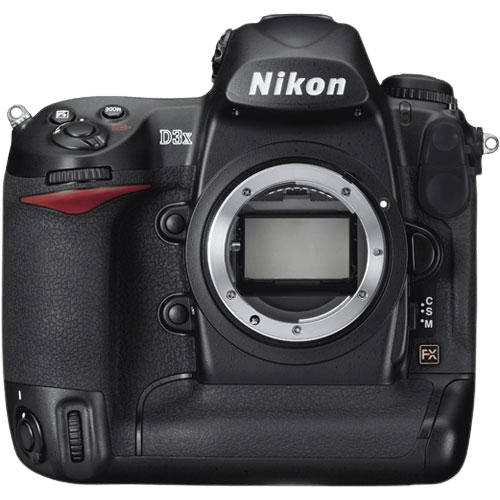Nikon D3X Specs and Scores

The Nikon D3X scores 64 out of 100, reflecting its standing in the DSLR market. Announced on December 1, 2008, this camera is over a decade old, with a launch price of $9,172. It measures 160 x 157 x 88mm and weighs 2.78lbs (1260g). Despite its age, the D3X still offers solid specifications for photography enthusiasts. However, newer cameras in the market now provide more advanced features and better performance at a lower price point.
Nikon D3X Overview and Optics
The Nikon D3X earns a score of 65/100 for its optics. This camera features a 24.5-megapixel full-frame CMOS sensor, which is powered by the Expeed processor. It has a shooting speed of 5 frames per second and a DXOMARK score of 88 for its sensor. The Nikon D3X uses the Nikon F FX lens mount, but it does not offer image stabilization.
In the competitive camera market, the Nikon D3X’s optics are not at the forefront. With a 3:2 aspect ratio, its specifications are relatively standard compared to other cameras. Though it has a high-resolution sensor, its shooting speed is not as fast as some modern alternatives. The lack of image stabilization can also be a drawback for some photographers.
The Nikon D3X, with its optics score of 65/100, offers decent performance but may not be the top choice for those seeking cutting-edge features in today’s market.
Nikon D3X Video Performance
Unlike most modern cameras, the Nikon D3X does not possess video capabilities. However, it offers built-in time-lapse functionality, enabling users to create time-lapse sequences with ease.
Nikon D3X Features and Benefits
The Nikon D3X features a score of 54/100 in this section, which shows room for improvement. This camera has a 3-inch screen with a resolution of 920,000 dots. However, it lacks modern features such as a touchscreen, flip screen, GPS, WiFi, and Bluetooth connectivity.
Comparing the Nikon D3X to current market standards, it falls short in terms of convenience and connectivity. Many new cameras offer touchscreens for easier menu navigation, flip screens for versatile shooting angles, and wireless capabilities for seamless sharing and remote control.
Despite its shortcomings, the Nikon D3X still delivers quality images and reliable performance. However, users seeking advanced features and connectivity options may find this camera lacking. The Nikon D3X is a solid choice for those who prioritize image quality and performance over modern convenience features.
Nikon D3X Storage and Battery
The Nikon D3X receives a storage and battery score of 87/100, which is a strong result. The camera provides two memory card slots, compatible with Compact Flash (Type I or II) and UDMA cards. This flexibility proves useful for photographers who want to manage their storage efficiently.
Regarding battery life, the D3X impresses with a capacity of 4400 shots per charge. The camera uses an EN-EL4a battery type, known for its reliability and performance. However, the D3X lacks USB charging, which may disappoint some users who prefer the convenience of charging through a USB connection.
Taking these specifications into account, the Nikon D3X offers competitive storage and battery performance in today’s market. It caters well to the needs of professional photographers who require ample storage and long-lasting battery life.
